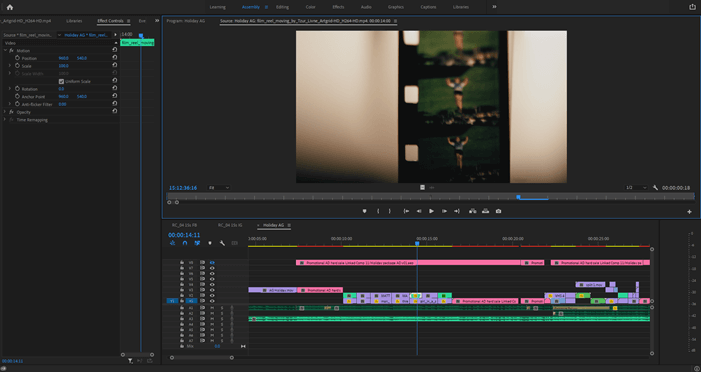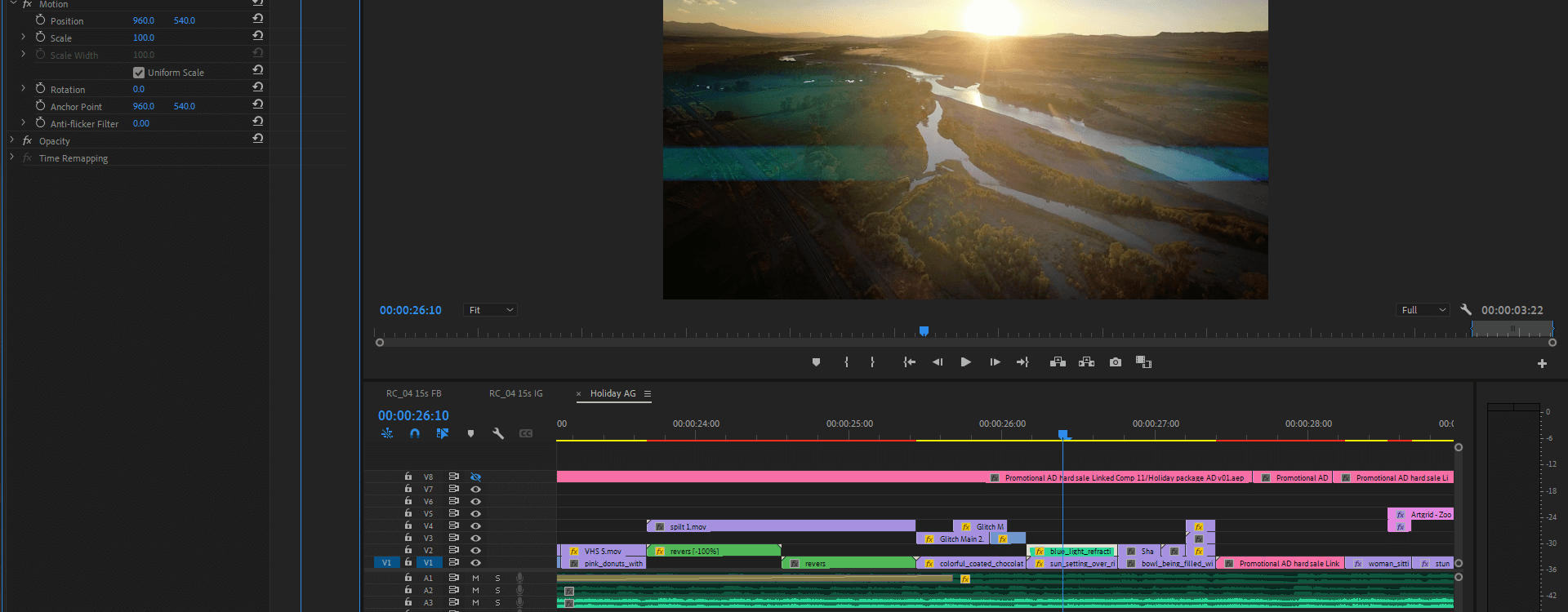Highlights
Table of Contents
Explore article topics
You’ve got a video, and now you want to add some complexity to it with lighting, text or even visual effects. But perhaps you don’t have the time or skill to pull off something completely original. In that case, you should be looking for what are known as “video overlays.”
There are a wide variety of overlays out there, ranging from free video overlays to paid ones. So, whatever your overlay needs might be, chances are you will be able to find what you’re looking for.
Before diving into the world of the video overlay, we should take a deeper look into exactly what they are. Then we can discuss types of transparent video overlays and how to use them.
What is a video overlay?
On a technical level, a video overlay is simply a motion graphic. But, as the word “overlay” indicates, it is a motion graphic laid over a video or animation. Common video overlay file formats are .MOV and .MP4, but others do exist depending on the video editing software being used. Even though video overlay is being applied to larger video, it is a video clip in and of itself. As such, an overlay’s various parameters can be edited through color grading, transitions, effects and layering.
Since it is being laid atop an existing clip, a video overlay has a transparent background. This is called an Alpha Channel, and it simply defines the transparency level of a clip.
There are overlays for lens flares, snow, text and others. We will discuss them in greater detail in the following section.
Get unlimited video templates by top designers
Popular types of overlays
All sorts of video overlays exist. They run the gamut from simple lighting changes to dust to experimental effects like glitches. Again, you can find many of these offered as free video overlays.
Lighting overlay
Some common types of lighting overlays include lens flares and light leaks. There are also overlays that add bokeh to a video.
A lens flare is the scattering of light on a lens. For some filmmakers and videographers, it’s an annoyance. For others, it’s an aesthetic effect that adds a certain beauty to the moving image. You’ll likely see a lens flare in a JJ Abrams television series or movie (see: Star Trek).
On the other hand, light leaks are instances in which extra light is exposed to film or a sensor. This often happens through a gap in a camera lens or body, and it adds a sort of foggy or dreamy quality to a moving image.
Bokeh is a word used to describe out-of-focus areas in a moving image. Typically you will see nice bokeh in the background when there are neon, LED, or other lights.
Film overlay
Occasionally, videographers and even sometimes YouTubers will want to add a film look to their videos. In that case, they will need a film overlay.
To get that cinematic look, there are overlays for film grain. This is a type of vintage overlay. On a technical level, film grain is a random physical texture created by small metallic silver particles on celluloid during the developing process. This “grain” gives video the imperfections of analog film common during 20th-century film history.
Similarly, some film overlays make video look vintage, aged, damaged or even really destroyed. A vintage overlay can apply digital scratches, nicks, scrapes and other looks to a video clip.

And if you want to give your video some “TV noise” (aka, static), there are overlays for that as well. Another popular TV overlay gives video the look of VHS tape.
Weather overlay
In some cases, you might want to add different weather elements to your videos. There are video overlays for fog, rain, and other weather conditions. A popular one is the snow video overlay.
Keep in mind that although weather overlays won’t be as realistic as CGI, you will be able to adjust the parameters of your weather effect. This will allow you to fine-tune it to make it as realistic as possible.
Graphics overlay
With graphics overlays, filmmakers can add all sorts of animations to their videos. There are graphics overlays for things like computer code, arrows, bubbles, fire embers, and even holiday imagery.
These types of graphic overlays probably aren’t going to go into a short film. You often find them used instead by YouTubers or social media content creators.
Video text overlay
If you want to add text to a video, you will need to look for text overlays. There are very basic text overlays as well as more advanced ones that can give your videos a more professional typographic edge, as you might in commercials, Internet ads and YouTube videos.
Some stock text overlays might be very specific, like holiday ones where you might see phrases like “Happy Halloween.” Others will allow users to add their own words through their video software’s overlay editor.
Patterns, textures and experimental overlays
There are also overlays for patterns. Common pattern overlays include geometric patterns, ripples, wave patterns and the halftones you see when looking closely at printed materials like magazines.
Texture overlays can be even more interesting. They can include textures that replicate watercolor looks, paintbrush strokes, distressed metal and even damaged screens.
Far more experimental overlays give users options for glitches, television channel interference, flickering, LED monitor close-ups and so on.
Overlay parameters
Your video software for editing video overlays with certain effects or parameters. Perhaps most importantly, you will be able to adjust the transparency or opacity of the video overlay.
Other overlay effects that can be adjusted include color, contrast, saturation, and so on. The best thing to do is to familiarize yourself with the video overlay editing menu and experiment. This way, you’ll learn how to alter video overlays but also see just how far you can push their values.
How to use overlays
Once you’ve found the overlay you want to use, it’s time to load them into your video editor. As we noted above, an overlay is technically a video clip but one with transparency values. This means you layer it atop the selected video clip.
Overlays can be loaded into editing software like DaVinci Resolve, Adobe Premiere or Final Cut Pro. If you’re using very basic editing software, check that you can use overlays in them.
Once you’ve placed your overlay in your editing timeline, it’s time to edit it. Using the overlay video editor, you can tweak the clips’ values so that you get your overlay looking exactly as you want it.
Just keep in mind that you will need to make sure that the transition into and out of the overlay is smooth. You will also want to make sure your overlays fit any audio that you might have. For instance, if you are using TV static, you might want audio that matches the video overlay.
Finding video overlays and other thoughts
Each video editing software will come with some stock video overlays. It won’t hurt to check these out. You might find some that you like, but you will also quickly realize that there are many more options out there.
Searching the web, you can find some free video overlays. You will also see a variety of overlays for purchase.
Instead of purchasing video overlays one-by-one, consider subscribing to a platform like Artlist where you can download as many royalty-free overlays as you like. This way you can use them wherever and whenever you like.
Share this article
Did you find this article useful?
Related Posts
- By Kim Wacker
- 6 MIN READ
- By Josh Edwards
- 5 MIN READ
- By Robert Hardy
- 3 MIN READ
Latest Posts
- 25 Apr
- By Josh Edwards
- 4 MIN READ
